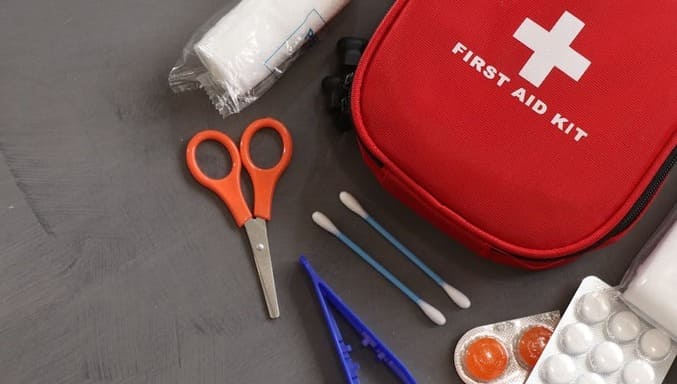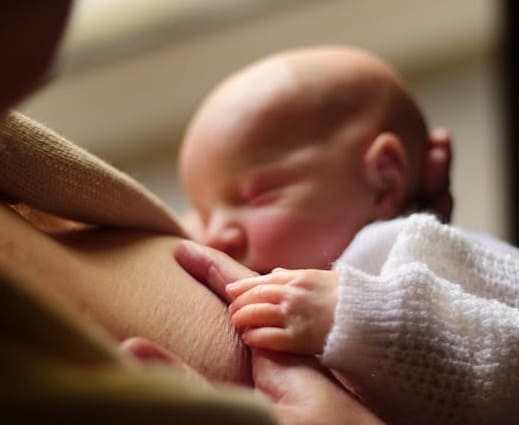Peace of Mind in a Box: Your Guide to the Ultimate Family Emergency Kit
Picture this: the power goes out during a winter storm. It’s 6 PM, you’re halfway through making dinner, and suddenly everything’s dark. Your seven-year-old clutches your hand: “Mom, what do we do?”
Now imagine two scenarios. In one, you’re fumbling for your phone’s flashlight, panicking about the defrosting freezer, wondering if you even have batteries anywhere. In the other, you walk to the hall closet, pull out a kit you packed months ago, and boom—flashlights on, backup water ready, snacks distributed. Crisis mode: off. Parent superhero mode: on.
That’s not just preparedness. That’s the difference between white-knuckling through an emergency and actually being able to calm your kids down because you’ve got this handled. And honestly? The peace of mind you’ll feel just knowing that kit exists in your closet is worth the afternoon it takes to put it together.

Why Bother? (Besides Your Mom Telling You To)
Look, I get it. Between work deadlines, soccer practice, and trying to remember if you fed the dog this morning, “disaster preparedness” ranks somewhere between “organize the junk drawer” and “actually read those school newsletters” on your to-do list.
But here’s the thing: emergencies don’t care about your schedule. They don’t wait for a convenient Tuesday afternoon when you’ve finally got your life together. They show up at the worst possible moment—always.
Power outage during the coldest night of the year? Check. Water main break when everyone has the flu? Yep. Evacuation order when you just got the kids to bed after a three-hour homework meltdown? That’s usually how it goes.
The difference between “we survived that” and “we got through that without losing our minds” is usually about 12 gallons of water, some flashlights, and snacks that don’t require a working stove. An emergency kit isn’t about being paranoid. It’s about being the kind of parent who can say “I’ve got this” and actually mean it.
What Actually Goes in This Kit?
Sure, you could buy one of those pre-made kits, but let’s be real—they’re either overpriced or filled with stuff your family will never use. Building your own means you can skip the weird freeze-dried astronaut food your kids won’t touch and add the snacks they’ll actually eat during a crisis.
The goal? Three days of supplies. That’s 72 hours. Why? Because that’s typically how long it takes for help to arrive after a major disaster. Three days of being completely self-sufficient. No grocery stores, no pizza delivery, no running to Target because you’re out of toilet paper.
The “Core Four” (AKA: Don’t Skip These)
These four things are non-negotiable. Everything else is negotiable. These? Not so much.
1. Water: Because Thirst Doesn’t Care About Your Emergency
You can live for weeks without food. You can live for about three days without water. Math is simple here: water wins, water always wins.
The Formula: One gallon per person, per day. Family of four? That’s 12 gallons for three days. Got pets? Add another half gallon per pet, per day. (Yes, Fluffy needs emergency water too.)
I know what you’re thinking: “That’s a lot of water jugs taking up space in my closet.” Yep. It is. Do it anyway.
How to Store It:
- Cool, dark place (not the garage where it’ll cook in summer)
- Actual water storage containers, not old milk jugs that’ll leak weird plastic chemicals
- Rotate it every six months—write the date on each jug with a Sharpie
- Stack them somewhere you can actually reach them, not behind the Christmas decorations
2. Food: Pack What Your Kids Will Actually Eat
Listen, if the power’s out, now is not the time to convince your picky eater to try quinoa. This is survival mode. Pack things your family will eat without complaint.
What to Throw in There:
- Canned stuff: soup, beans, fruit, whatever
- A manual can opener (I cannot stress this enough—electric ones are useless without power, and you will absolutely not remember where you put the manual one when you need it)
- Protein bars, granola bars, those Nature Valley things that turn into 10,000 crumbs
- Peanut butter. So much peanut butter.
- Crackers, nuts, trail mix
- Kid bribery items: candy, chocolate, maybe those fruit snacks that are basically candy
- Instant coffee for yourself, because you’re going to need it
- Don’t forget pet food
The Rules:
- Must last at least a year on the shelf
- Must be edible without cooking
- Must be stuff your family actually likes
- Must be high-calorie (emergencies burn energy, both physical and emotional)
3. Light & Communication: Because Your Phone Dies Fast
Sitting in the dark with scared kids is no joke. And your phone battery lasts exactly 4 hours when you need it to last 4 days. Always.
Get These:
- Flashlights—one for each person (yes, even the toddler, give them the cheap one)
- Battery-powered radio (preferably NOAA weather radio so you know what’s happening)
- SO. MANY. BATTERIES. Buy more than you think you need. Then buy more.
- Power banks for phones, charged up and ready (check them every few months or they’ll be dead when you need them)
- Written list of emergency contacts—actual paper, because when your phone dies, you’re not going to remember anyone’s number
- A whistle (for signaling help when you’re too hoarse from yelling at the kids)
4. First Aid & Health: When the Pharmacy Is Closed
Murphy’s Law says someone will get a fever at 2 AM during an emergency. Plan accordingly.
The Medical Stuff:
- First aid kit with the basics: bandages, antiseptic wipes, gauze, tape
- Scissors, tweezers (for splinters acquired while “helping”)
- Thermometer
- Ibuprofen and Tylenol (adult and kid versions)
- Anti-diarrhea meds (because of course)
- Tums or whatever antacid you swear by
- Antibiotic ointment
The Other Necessities People Forget:
- At least a week’s worth of any prescription meds (and rotate them before they expire)
- Toilet paper. Please. Pack extra.
- Feminine products
- Wet wipes (multiple uses, trust me)
- Hand sanitizer
- Spare glasses if you wear them (contacts are tough without running water)
- Baby stuff if needed: diapers, formula, bottles—more than you think
Level Up Your Kit: The Stuff That Separates “Survived” from “Handled It”
Got the basics? Great. Now here’s the stuff that’ll make you feel like you actually know what you’re doing.
Important Documents (The Boring Adult Stuff)
Get a waterproof bag or container. Throw these in:
- Copies of IDs, passports, birth certificates
- Insurance stuff (home, car, health)
- Bank info, credit card numbers
- Medical records and prescription details
- Contact info for important people, especially someone out of state (local phone lines often fail)
- USB drive with all of this backed up digitally
Why? Because proving you exist and own things becomes surprisingly hard when all your stuff is underwater/burned/gone.
Tools and Supplies
- Multi-tool or Swiss Army knife (you’ll find 47 uses for it)
- Duct tape (fixes everything, including morale)
- Plastic sheeting (for sealing rooms or emergency shelter situations)
- Local maps with evacuation routes marked in highlighter (your GPS won’t work)
- Cash—actual bills, at least $200-300 in small denominations (ATMs and credit cards need power)
- Waterproof matches or a lighter
Comfort and Clothing
- Change of clothes for everyone (size up for kids, they grow fast)
- Real shoes—sneakers, not sandals (broken glass is a thing during disasters)
- Sleeping bags or blankets (one per person, plus extras because someone always gets cold)
- Rain gear
- Work gloves
- Warm layers even if you live somewhere hot (nights get cold without heat)
Don’t Forget the Little Ones: Keeping Kids from Losing It
The physical emergency is one thing. Keeping your kids calm during said emergency? That’s the real challenge.
Pack These for Sanity:
- Their favorite stuffed animal (yes, even if it’s huge)
- Coloring books and crayons
- Cards, small board games, anything that doesn’t need batteries
- A couple of their favorite books
- Print out some family photos (sounds silly, but comfort is comfort)
- Their favorite snacks—this is not the time to deny them goldfish crackers
- Whatever keeps them occupied without screens
Where Do You Actually Put All This Stuff?
The Main Kit: Your Home Base
Pick somewhere accessible that everyone knows about. Not “in the attic behind the Christmas stuff.” Somewhere you can get to quickly, even in the dark.
Good Options:
- Hall closet on the main floor
- Basement (if you’re flood-prone, put it on a high shelf, not the floor)
- Garage (if it’s climate-controlled—don’t cook your water in 100-degree heat)
How to Store It Without Making a Mess:
- Clear plastic bins so you can see what’s inside
- Label everything with contents and expiration dates in big letters
- Heavy stuff on bottom, light stuff on top (basic physics)
- Multiple smaller containers beat one giant one (easier to carry, easier to find things)
- Tell everyone where it is—seriously, walk the family to it and point
The “Go-Bag”: When You Have 5 Minutes to Leave
If someone says “evacuate now,” you’re not going to have time to pack 12 gallons of water. You need a grab-and-go version for each person.
What Goes in Each Backpack:
- Water bottles (as many as fit)
- Energy bars, trail mix, whatever fits
- Flashlight and batteries
- Mini first aid kit
- Copies of important docs
- Change of clothes and underwear
- Emergency blanket (those foil ones are tiny)
- Any medications you need
- Some cash
- Contact info written down
Where to Keep Them: By the door. In bedroom closets. Anywhere you can grab them in 30 seconds flat. Not in the garage. Not in the basement. By. The. Door.
Mistakes People Make (Learn from Their Pain)
The “Set It and Forget It” Disaster
You pack everything perfectly in 2023. In 2025, the food’s expired, the batteries are dead, and your toddler’s emergency clothes fit a newborn. Oops.
The Fix: Set a phone reminder for every six months. When the clocks change for daylight saving, check your kit. Takes 20 minutes. Write a checklist so you don’t have to think about it.
The Water Shortage
People consistently underestimate how much water they need. Or they store it in old milk jugs that leak weird plastic taste.
The Fix: Do the math: 1 gallon per person per day. Don’t round down. Buy actual water storage containers. Check them when you check everything else.
The Inaccessible Kit Problem
Your kit is in the basement. The basement floods. The kit is now useless. Or it’s in a locked garage and you can’t find the keys at 3 AM.
The Fix: Main floor storage. Multiple access points. Everyone knows where it is. If there’s a lock, everyone knows where the key is.
Forgetting Your Family’s Weird Needs
You built a generic kit, but your kid has a peanut allergy, your dog needs special food, and your spouse has a prescription they literally cannot miss.
The Fix: Customize. Update when things change. New baby? Add baby stuff. New medication? Add that too. This isn’t one-size-fits-all.
Having Stuff But No Plan
You’ve got supplies, but nobody knows what to do with them. Where do we meet if we’re separated? Who calls who? What’s the plan?
The Fix: Have the conversation. Practice it. Make it a weird family game if you have to. Drill the evacuation route. It feels silly until it’s not.
Actually Maintaining This Thing
The Twice-a-Year Check-In
This isn’t a “make it once and you’re done” situation. You need to check it. Regularly.
Set a reminder for every six months. When you do daylight saving time, check your kit. Here’s what to do:
- Toss expired food and meds
- Test every flashlight (there’s always one with dead batteries)
- Update any documents that changed
- Swap out the water
- See if your kids’ clothes still fit (spoiler: they don’t)
- Actually talk through your plan again
Practice Without Being Weird About It
You don’t need to terrify your kids. Make it a game, not a doomsday prep session.
Things to Actually Do:
- Walk the evacuation routes like you’re going on an adventure
- Have a “lights out” dinner with flashlights (kids usually think this is fun)
- Pick an out-of-state contact person and make sure everyone knows their number
- Decide on meeting points: “If we can’t get home, where do we go?”
- Practice actually using the equipment so it’s not your first time during an actual emergency
Adjust for the Season
Your needs change. Plan accordingly.
Winter Additions:
- More warm stuff: blankets, hand warmers, extra layers
- Sand or cat litter for traction
- Snow shovel
Summer Additions:
- Sunscreen
- Bug spray
- Extra water (even more than usual)
- Cooling items if you’ve got space
The TL;DR Version
- Core Four must-haves: Water (1 gallon per person per day), food that doesn’t need cooking, lights/communication stuff, and first aid
- Customize it: Your family is unique—add their meds, baby supplies, pet food, whatever you actually need
- Two kits: Big one at home, small go-bags by the door for everyone
- Make it accessible: Not in the attic. Not behind stuff. Somewhere you can reach in the dark.
- Check it twice a year: When the clocks change, check your kit. Set a reminder or you’ll forget.
- Documents matter: Waterproof copies of everything important. You’ll thank yourself later.
- Cash is king: ATMs don’t work without power. Keep $200-300 in small bills.
- Have a plan: Supplies are useless if nobody knows what to do with them
- Kid comfort items: Pack the teddy bear. Pack the goldfish crackers. Survival isn’t just physical.
- Think seasonal: Winter needs different stuff than summer
Bottom Line: Just Do It
Look, building an emergency kit isn’t fun. It’s not Instagram-worthy. Nobody’s going to give you a medal for having 12 gallons of water in your closet.
But you know what? The next time the power goes out or there’s an evacuation order or something breaks in your neighborhood, you’re going to walk to that closet, pull out that kit, and feel like an absolute genius. And more importantly, your kids are going to see you handle it calmly instead of panicking.
You don’t have to do this all at once. Start small:
- This week: Buy some extra water and canned food at the grocery store
- Next week: Grab a couple flashlights and batteries
- The week after: Gather your important documents
- Keep going until it’s done
Here’s what I want you to remember: An emergency kit isn’t about fear. It’s about being the kind of parent who can say “I’ve got this” when things go sideways. It’s about protecting your family not just with love, but with preparation.
One afternoon. That’s all it takes to build basic preparedness. One afternoon for months or years of peace of mind.
Your future self—the one dealing with a power outage or evacuation—will thank you. Your kids, who stay calm because you’re calm, will thank you. And honestly, you’ll sleep better just knowing it’s there.
So start today. Start now. Pick one thing from this list and do it this weekend.
Because the best time to prepare for an emergency is before one happens. The second best time is right now.

References
- American Red Cross. Build a Kit
- Ready.gov. Basic Disaster Supplies Kit
- FEMA. Emergency Preparedness and Response
- CDC. Emergency Preparedness and You





